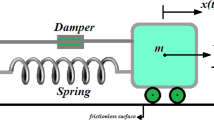Abstrac
—GeoFEM (Iizuka et al., 1999) is a parallel finite element analysis system intended for multi-physics, multi-scale problems of solid earth field phenomena. Very large linear elastic problems have already been resolved by parallel computation with GeoFEM. The next stage is to examine large-scale nonlinear problems using GeoFEM. The analysis of large-scale contact problems for fault zones is particularly important in the development of models that simulate the occurrence and cycle of earthquakes.¶This paper proposes a parallel FEM using an iterative solver with the augmented Lagrange method for solving large-scale contact problems. Direct solvers are presently applied to contact problem analysis because the matrix for such problems is ill-conditioned. However, direct solvers are not suitable for large-scale matrices. The augmented Lagrange method can improve the matrix conditions. The present study evaluates a parallel FEM using an iterative solver with the augmented Lagrange method. Analysis of a contact problem with the augmented Lagrange method revealed that an optimal penalty parameter exists and that large-scale parallel contact analysis using the iterative solver with localized preconditioning is promising.
Similar content being viewed by others
Author information
Authors and Affiliations
Additional information
Received September 23, 1999; revised March 30, 2000; accepted April 15, 2000
Rights and permissions
About this article
Cite this article
Iizuka, M., Okuda, H. & Yagawa, G. Nonlinear Structural Subsystem of GeoFEM for Fault Zone Analysis. Pure appl. geophys. 157, 2105–2124 (2000). https://doi.org/10.1007/PL00001077
Issue Date:
DOI: https://doi.org/10.1007/PL00001077




